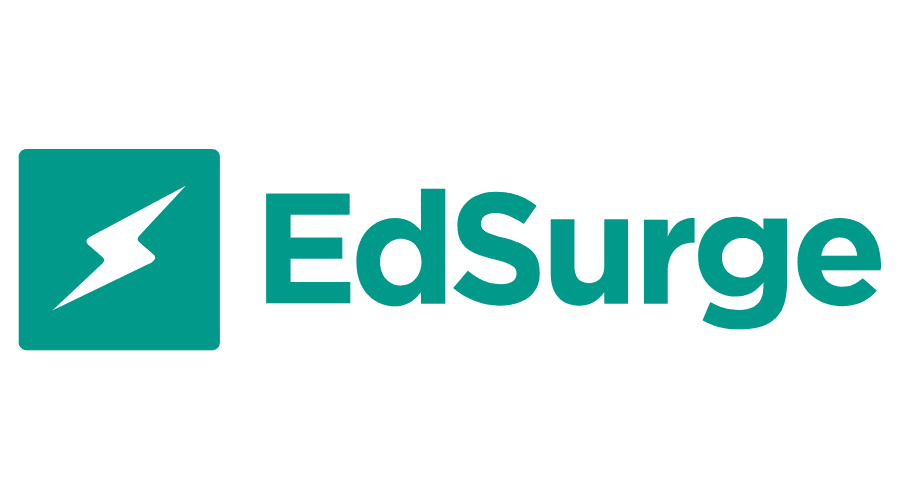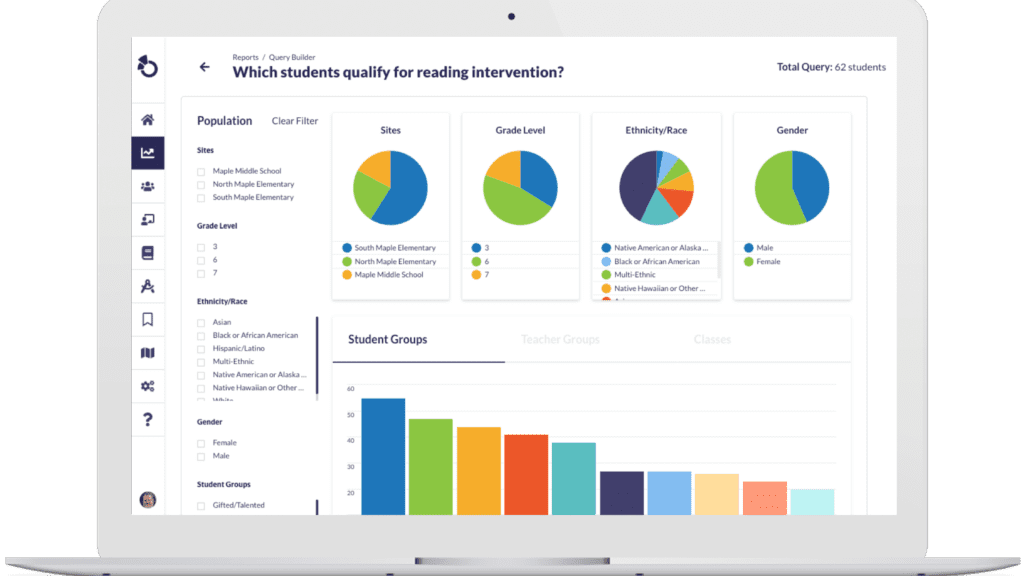How Data Drives Strategies for Improved Student Outcomes
By: David Specht
This piece originally appeared on EdSurge on April 10, 2024.


Becky Mathison
Assistant Superintendent of Innovation, Teaching and Learning
Winnetka Public Schools, Illinois.
“If you are able to quickly group students by data, that can save a lot of time so that educators around the table can use their brainpower to analyze what the data means, determine inconsistencies, identify when more information is needed and discuss students who might benefit from student services or even grade-level acceleration.”
-Mathison
“Data informs us how best to respond to student needs and work toward the greatest student outcomes. Really analyzing data helps our district and school leaders support our teachers so they can, in turn, support each student.”
-Mathison
Data-driven decisions are increasingly recognized as a critical component of K-12 education, enhancing personalized learning, improving assessment and feedback, optimizing resource allocation and fostering early intervention. These decisions are informed by analyzing various types of data, such as academic achievement, non-academic factors, program and systems data, and perception data. In turn, this analysis helps educators make informed choices that directly affect student learning and school effectiveness.
Despite the benefits, implementing data-driven decision-making in education presents challenges. School leaders and teachers may need more time, tools, expertise and professional development to collect, analyze and interpret data effectively. Moreover, there is a distinction between being data-rich and data-driven. Collecting data is essential, but it can increase pressure on educators who may already be overburdened with responsibilities. High-quality data management systems that automate the collection and analysis processes are key for institutions seeking to shift toward a data-driven model.
Recently, EdSurge spoke with Becky Mathison, Assistant Superintendent of Innovation, Teaching and Learning at Winnetka Public Schools, Illinois, about how her district supports educators in effective and efficient data analysis and use. With over 10 years of experience in district-level administrative roles focusing on curriculum, instruction and assessment, she has extensive expertise in building and refining database decision-making systems. Before her administrative roles, Mathison was a middle school science teacher, leading grade-level teams and the science department. During this time, her interest in the relationship between student learning outcomes and data-driven insights first emerged, guiding her approach to understanding student progress and informing future educational strategies.
EdSurge: Why is data-driven decision-making important in K-12 education at the classroom and district levels?
Mathison: Data can help inform many instructional strategies, which is especially important in the current age where schools are asked to do more and more. The balance between quantitative and qualitative data is essential. In terms of quantitative data, having something that’s normed is invaluable. It allows for comparing a student’s growth over time and also noting their achievements against benchmarks. That’s one way to figure out where to shine our light.
Another approach involves analyzing student work samples and teacher feedback, offering a more holistic view of student needs. Previously, as a teacher, the primary focus was on delivering content. However, today there’s a growing realization of the importance of dedicating more time during the school day to social-emotional learning and physical activity and providing students with more autonomy in their learning. Qualitative data remains equally impactful in this regard.
From a system or district perspective, ensuring consistency between and among grade levels is really important. Agreed-upon sets of data — whether universal screeners, common formative assessments with a rubric or projects that students are working on — give us a way to calibrate across the system so that we can figure out where we might need to make tweaks with curriculum or do things differently with staffing because of student needs.
How does the dynamic of quantitative and qualitative data enhance the efficiency and effectiveness of educational decision-making processes?
Having quantitative data readily available increases the efficiency of professional learning communities (PLCs) coming together. If you are able to quickly group students by data, that can save a lot of time so that educators around the table can use their brainpower to analyze what the data means, determine inconsistencies, identify when more information is needed and discuss students who might benefit from student services or even grade-level acceleration.
Once that high-level programmatic matching is made, the qualitative data comes into play. In the PLC, teachers can look at those student groups from a whole-child perspective. They can review student work samples and identify areas of strength or skills needing improvement, which helps us determine the appropriate support needed for each student.
How do you support teachers and staff in effectively collecting, analyzing and using student data to inform their instructional practices?
We foster a positive data culture and develop data literacy across the district. As a district administrator, I let teachers know that I view the data as a starting point to ask questions to better understand what’s working and what isn’t, ultimately working toward an optimal student experience.
Developing data literacy means talking through not only why we use data but also how to use screening tools and what exactly the data means. We approach this with a combination of professional development and ongoing, job-embedded support. The professional development part of it is messaging: This is why, as a district, we’re headed in this direction, these are the different tools and supports we’re going to provide you and this is the value of data. Then, we have a team of coaches partnered with building administrators to support teachers in using the tools, gathering data and understanding what it means in their context.
Our district uses two data tools: one to analyze data locally and the other to put the data at the fingertips of the teachers. Too often, teachers have to search several platforms to collect student data. They might use three different platforms for universal screening, another for attendance and yet another to find out about incident reports. Otus has allowed us to merge that data so that a teacher can go to the report section of a student profile and access all of that information in one place. Currently, we have mostly quantitative data in the system. However, we are adding more qualitative data with different document uploads. For example, we are wrapping up a tier-one literacy curriculum review. We have plans to upload the results of common formative assessments into the system and possibly even upload the actual assessments.
I also want to mention the importance of community education around data literacy so that parents understand that when they’re receiving assessment information, it’s one snapshot in time. We aim to partner with families in our approach to data literacy. One of our goals this year was to increase parent communication around student learning. We sent home all of our assessment reports. It was valuable because it helped parents understand different assessments, but each report looked different and used different reporting methods, which requires another level of data literacy.
Next year, we plan to use Otus with parents. They will be able to log in to one place and access the test results more easily. The different data results will break down the meaning of each [test result] while visually representing the data in a similar way.
What measures do you take to continuously monitor and evaluate the effectiveness of data-driven practices?
We have a tiered process, starting at the district level and going out to the classroom level. Three times a year, after we have universal screening data collected, our first step is to meet with district administrators and building administrators, where we look at the data for the system. Part of what I include in that meeting is different activities or focus areas that the principals might want to address in their buildings. Then, the following week, there is a building leadership team meeting, which includes the principal and teacher leaders in the building, where they look through the data and determine areas of focus given their school improvement plan. Finally, each of the grade-level teams meets to go through the data. At these team meetings, there will be not only the classroom teachers but also interventionists, special education teachers and sometimes related arts teachers. We are fortunate as a district to have this system in place three times a year. The goal, though, is to have more of these conversations in the interim.
Data-driven decision-making is similar to other evidence-based practices in schools, like having a guaranteed and viable curriculum or using assessment for learning processes. Data informs us how best to respond to student needs and work toward the greatest student outcomes. Really analyzing data helps our district and school leaders support our teachers so they can, in turn, support each student.
Related Resources
Request a demo!
See exactly how Otus can help your school accelerate student growth and improve student outcomes – all while saving educators time.





